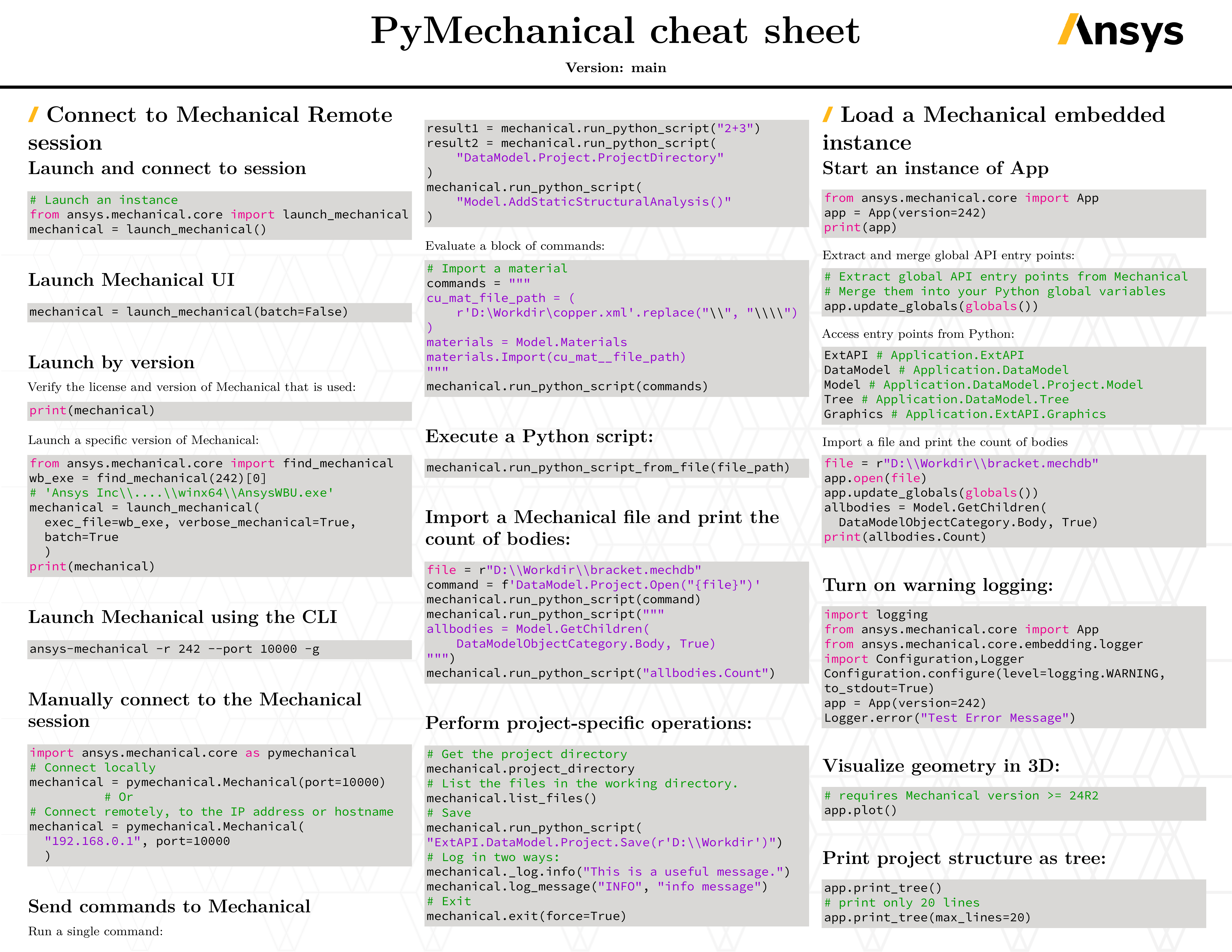

Python API to interact with Ansys Mechanical (FEA software for structural engineering) from 2024R1 and later versions.
Learn how to install PyMechanical and verify the installation. Explains architecture and background.
Install Architecture Docker
Learn how to use PyMechanical and its features including scripting, configuration, and CLI.
How to Mechanical scripting CLI
Dive into examples created using PyMechanical.
Basic Advanced Remote
Understand PyMechanical API endpoints and their capabilities
Classes Methods Error handling
Frequently asked questions and their answers.
How Why What
Issues and limitations on both PyMechanical and Mechanical.
24R1 24R2 25R1 25R2
Learn how to contribute to the PyMechanical codebase or documentation.
Test Documentation Issues


